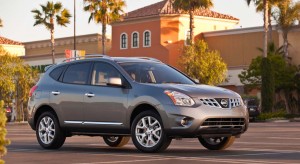Despite a modest increase of %, Nissan’s global sales set a record during the first six months of the company’s fiscal year as the Japanese automaker reported deliveries of 2.45 million units in markets around the world.
The modest sales increase this year leaves the company short of its sales targets for the fiscal year with six months still to come. And it leaves Nissan lagging well behind its Japanese arch-rival Toyota, which remains the world’s top-selling automaker this year.
“As we look forward to fiscal 2013, we expect the global automotive industry to set yet another volume record, growing to over 81 million units. Based on the continued execution of our power 88 mid-term plan strategies and initiatives and our strong product offerings, we project Nissan unit sales to grow to 5,300,000 units for the year,” the company said in its annual report to shareholders.
Like key competitors, Nissan’s strategy has been shifting focus from traditional markets in Europe, Japan and North America to China and other emerging markets that, by various estimates, could dominate the automotive sales charts in the years to come.
Nissan said last week Brazil, Russia, China and India – the so-called BRIC countries — already represent 30% of sales for the combined Renault-Nissan Alliance. The Japanese side of that partnership stressed it is critical to identify early and invest in the “BRICs of Tomorrow,” including two countries that have been the focus of the alliance’s recent announcements, Indonesia, which it said is at the epicenter of “Emerging Asia,” and Myanmar.
(Nissan among early leaders in race to deliver autonomous, semi-autonomous vehicles. Click Here for more.)
Older markets remain important, however, and Nissan actually did better in the home Japanese market than its overall sales increase would suggests
During the first half of the current fiscal year, Nissan’s sales were up in the company’s home market in Japan, where total sales, including mini-vehicles, rose 3.6% to 314,878 units. Nissan’s mini-vehicle sales in the Japan alone rose by 20%.
Nissan’s exports from Japan dropped 11.6% year-on-year to 292,523 units. The decrease is mainly due to decreased demand in Europe and other regions. Exports to North America were relatively stable at 202,633 units, a slight 1.1% decrease year over year.
Even with the decline in exports, Nissan sales outside of Japan increased 1.5% year-on-year to 2,134,066 units, marking a record high for the April-September period. Sales were up in the United States, Mexico and China during the first half of the year but dropped in Europe and other regions, Nissan reported.
(Nissan lags in latest Consumer Reports auto reliability survey. Click Here to find out who came out on top.)
During September, however, Nissan’s sales in Europe improved thanks to a strong showing in the Russian market. In Europe, sales were up 2 % year-over-year to 67,372 units, mainly due to increased sales in Russia.
In addition, Nissan’s sales in China increased 83.4% year-on-year to 117,141 units, mainly due to increased demand for the Sylphy series and Qashqai. Last year, Nissan sales in China had been undercut by sometimes violent demonstrations triggered by a dispute over uninhabited islands that lie in the waster between China and Japan.
Sales in other regions increased 2.6% year-on-year to 77,832 units, mainly due to favorable sales in Malaysia, Nissan said. However, sales in India, another market targeted for growth by Nissan, are developing more slowly than expected and are now unlikely to hit the 100,000 mark during fiscal 2014, Nissan officials recently conceded.
(Court sidelines NY’s plan to turn Nissan NV200 van into the “Taxi of Tomorrow.” Click Here for the story.)
Also, in keeping with Nissan chief executive Carlos Ghosn’s dictum to keep inventories in check, Nissan’s overall production in the first six months of the fiscal year actually dropped by 0.5%. The cuts primarily came in Europe in response to slow sales in the European Union. However, production increased during September as the company ramped up operations in Mexico and finished re-shuffling models among its plants in the U.S.

